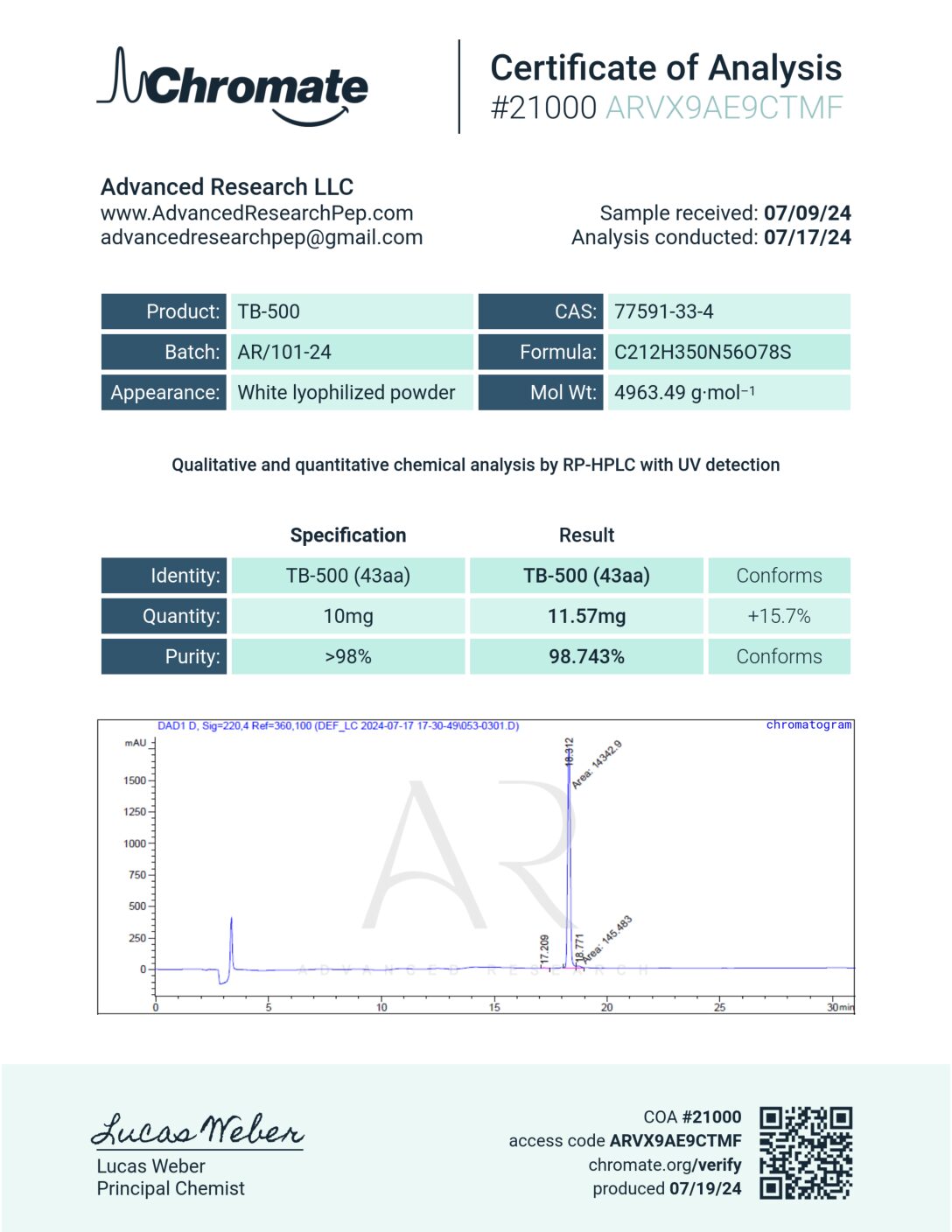Insulin-like growth factor-1 (IGF-1) is a 70 amino-acid single chain peptide with a
molecular weight of 7.6 kDa. IGF-1 contains three disulphide bridges, between amino acids 6 and 48, 18
and 61 and 47 and 52, which create the tertiary structure critical for optimum binding to the IGF-1R
(Figure 1). As its name suggests, IGF-1 is structurally similar to insulin and is capable of binding to the
insulin receptor (I-R), albeit with a lower affinity than that towards IGF-1R. IGF-1 is the principal
mediator of growth hormone (GH), it plays a crucial role in promoting cell growth and differentiation in
childhood and continues to have an anabolic effect in adults. When GH is produced by the anterior
pituitary gland its release into the bloodstream stimulates the production and release of IGF-1, which
subsequently binds to the IGF-1R displayed on the surface of nearly every cell in the body. IGF-1R is
comprised of two alpha and two beta subunits linked by disulphide bonds. The transmembrane beta
subunits each have intracellular tyrosine kinase domains that are activated upon IGF-1 binding to the
extracellular alpha subunits. Activation of these kinase domains results in the activation of multiple
signaling pathways including the PI3K/Akt pathway and the Raf/MEK/ERK cascade that ultimately
prevent apoptosis and promote cellular growth and survival. IGF-1 and its receptor IGF-1R are involved
in these critical pathways and therefore play a pivotal role in healthy tissue homeostasis but also a far
less desirable role in diseases such as cancer where they can be responsible for the survival and
proliferation of malignant cells. IGF-1 acts mostly as an endocrine hormone secreted primarily by the
liver and transported to the target tissues. It is also produced by tissues outside the liver where it acts
locally in a paracrine fashion and is believed to play an important autocrine role in cancer. The full
length IGF-1 precursor protein (P05019) has a signal peptide (pos. 1–21), a propeptide (pos. 22–48), an
IGF-1 sequence (pos. 49–118) and an E peptide sequence (pos. 119–195). Alternative splicing of IGF-1
mRNA yields three pro-hormones or so called “E” peptides. There is increasing evidence that these Epeptides (Ea, Eb, Ec) themselves have functional roles that are independent of IGF-1 receptor activation,
including effects on proliferation and cell migration. Pfeffer et al. found that Ea and Eb peptides enhance
the uptake of IGF-1 into cells or aid in the release of IGF-1 from IGFBPs and its binding to IGF receptors.
Hede et al. reported a tethering function of E peptides that could aid in maintaining concentrations of
IGF-1 at their site of synthesis to enable more localized effects. The IGF-1 Ec peptide, also known as
mechano-growth factor (MGF), is up-regulated in exercised and damaged muscles, plays a
neuroprotective role against ischemia and contributes to the actions of IGF-1 to improve cardiac
function and activate resident stem cell populations. Exogenous administration of synthetic Ec peptides
leads to phosphorylation of extracellular signal regulated kinases (ERK1 and ERK2), serine/threonine-
specific protein kinase (Akt), IGF-1 and insulin receptor-independent cell growth [16] and produces
mitogenic effect on human cell lines.
Reference:
Bailes J, Soloviev M. Insulin-Like Growth Factor-1 (IGF-1) and Its Monitoring in Medical Diagnostic and in
Sports. Biomolecules. 2021 Feb 4;11(2):217. doi: 10.3390/biom11020217. PMID: 33557137; PMCID:
PMC7913862.
IGF-1LR3 1mg
$85.00
Insulin-like growth factor-1 (IGF-1) is a 70 amino-acid single chain peptide with a
molecular weight of 7.6 kDa. IGF-1 contains three disulphide bridges, between amino acids 6 and 48, 18
and 61 and 47 and 52, which create the tertiary structure critical for optimum binding to the IGF-1R
(Figure 1).
In stock
| Weight | 0.5 oz |
|---|











Reviews
There are no reviews yet